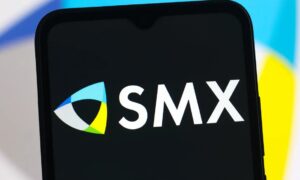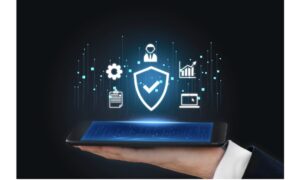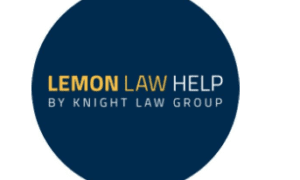New York City has set some sustainable target goals. The city intends to generate 50% of its energy from renewable resources by 2030. Apart from this, they intend to reduce the emissions by 80% as compared to the levels in 2005 by 2050. In a city with millions of buildings, attempts to upgrade all the properties is a mammoth task. In order to improve lighting efficiency, Local Law 88 was passed. Besides this, the Law also aims to give the tenants visibility on their energy consumption.
This Law in New York City requires property owners to upgrade their lighting systems and install sub-meters in their tenant spaces. It was amended in 2008. The Law states that if a building owner fails to meet a specific requirement related to lighting updates, they are liable to fines. The penalty is also applicable if the owner does not install electric submeters in tenant spaces.
This blog will focus on LL88 and its importance for Local Law 97 compliance. To get an overview of the whole thing, let’s continue reading the blog.
Why is this Law important?
The New York Local Law 88 mandates that the common areas in residential and non-residential buildings that are more than 25,000 sqft need to upgrade their lighting. This rule is followed to meet the current NYC Energy Conservation Code standards by 2025. The buildings have until January 1, 2025, to comply. Failing to adhere to this Law can impose fines starting at $1,500 every year until the owners abide by it.
Upgrading the lighting system to meet the Energy Conservation Code
The primary step that owners need to take is to find out which of their properties are covered by the Law. Here is a comprehensive list of the requirements that can be taken into account. In general, if any one of the following criteria meets, your property can be subjected to LL88:
- An individual building with a minimum of 25,000 sq ft of floor space.
- A group of 2 or more buildings under the same tax lot. They must add up to 50,000 sq ft.
- A number of structures owned by the same group of owners oversee condominiums.
Apart from this, structures held by the same corporations that fit into the criteria mentioned above are also subject to Local Law 97 regulations.
Situations where you do not need to comply:
- If your structure is a residential property where 1-3 families reside. They do not even need an exemption report.
- Suppose your building is in occupancy group R-2 or R-3. However, they must submit a report to the NYC Department of Buildings showing that the property is exempt.
- Houses of worship that are under the occupancy group 3-A do not have to follow this upgrade. But they are subject to metering and reporting requirements.
Getting “up to code” with LL88
The buildings that are covered under this Law must demonstrate that the energy consumption in their premise complies with the code placed after July 2010. The most recent one is from 2020. There are two parts to the lighting standards:
- Energy density, which shows how much power is consumed in a given area.
- Lighting upgrades, including sensors, timers, etc.
Benefits of upgrading the lighting systems early
Although the deadline of January 1, 2025, provides plenty of time, an early upgrade has numerous advantages:
- The NYC Energy Conservation Code will be updated again, and the latest versions will have more requirements. Hence, if you wait for a longer time, you may have to follow more stringent rules.
- The LL88 requires upgrades for common areas as well as tenant spaces. By starting earlier, owners can conduct the process smoothly, especially if the space is not occupied. In addition to this, the lighting upgrade will also be less expensive.
- These upgrades can be capital-intensive. However, this Law allows the reformation to be spread out into multiple projects as long as it has been upgraded by the stipulated deadline.
What is Local Law 97?
The New York Local Law 97 sets carbon emissions caps in 2024 for buildings over 25,000 sq ft. It has impacted over 30,000 buildings all over the city. Those structures that exceed this limit will face costly fines from the year 2025. The owners will be penalized in the following spheres:
- Failure to submit a file
- Exceeding the emission limit
- Providing false documents
The covered buildings will have to comply with the emission limits on and after January 1, 2024. The reports have to be submitted by May 1, 2025, and by the same date every following year. It must be presented through a new DOB portal by a registered engineer or an architect.
LL88 and its importance for LL97 compliance
LL88 plays an important role in setting the stage for compliance with LL97. Here is how it is happening:
-
Energy efficiency
Enacted in 2009, the LL88 requires upgrades to lighting systems in larger buildings that are more than 25,000 sqft. They need to meet the stricter energy codes by 2025. The main motive is to make them more energy efficient by reducing power consumption. The LL97 focuses on reducing greenhouse gas emissions, and it relies on energy efficiency as its base.
-
Submetering
The LL 88 makes it mandatory for owners of properties to install sub-meters within large non-residential buildings. These devices will track energy usage. The data generated from these sub-meters is essential under LL97. It is important as it will monitor and manage the emission of the property and check whether it complies with the established levels.
-
Preparation
By upgrading the building’s lighting systems and installing submeters, the LL88 prepares them for the regulations of LL97. By leveraging this upgrade, the structures can identify the areas in which they can reduce energy consumption. This will help them make an informed decision about the potential improvements they have to make to meet the LL97 limits.
Overall, the LL88 sets the stage for the LL97. It lays the foundation for energy efficiency and provides important data for emission management. Both the NYC Local Laws will make the process more streamlined.
Also Read: Understanding Local Law 87 NYC
How can a trustworthy compliance service help?
Understanding such complex Laws can be difficult and confusing for property owners. Apart from this, the reports must be submitted by a professional who has one of the following qualifications:
- Registered design professional
- Licensed master electrician
- Licensed special electrician
The requirements of the Energy Conservation Code have a level of technical complexity. If you feel that you are unable to comply with the Laws, then contacting a Consulting solution in NYC can be beneficial. They will provide invaluable advice on how your property can become a part of carbon-neutral NYC by 2050.
Ending notes
If Local Law 88 is not followed properly, then the building owners may face severe consequences. To avoid that, it is essential to find a reliable agency to help them. At Cotocon Group, the professionals are aware of your hectic schedules. They will handle it all for you, and you do not have to take the time to understand and stay updated on the Compliance rules.
The team is dedicated to developing individualized sustainable plans that cater to your needs. So get in touch with them today to partner with a reliable energy consultant in NYC.



































